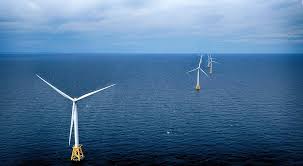-
US data shows emissions falls from the power industry as coal declines and gas and renewables rise
Date posted:
-
-
-
Post Author
Patrick LaveryCombustion Industry News Editor
-

-
Two recent data releases have given greater detail on the transformation of the US energy sector in recent times. The first, from the US Energy Information Administration, shows that carbon emissions from the power sector have declined 28% since 2005, from 2,416 million tonnes to 1,744 in 2017. Around half of this fall was due to replacement by renewable energies, while the other half was by fuel substitution, predominantly the switch from coal to natural gas as a result of the shale gas boom. From 2005 to 2017, the share of fossil fuels in electricity generation fell from 72% to 62%, and such a fall is likely to continue, perhaps even more rapidly. Apart from these real falls, lower demand growth, probably due to a mix of energy saving lightbulbs, the global recession and deindustrialisation, meant that the ‘business as usual’ rises – which would have meant a 27% increase in emissions over the period – did not occur.
The second release is a research report by the Institute for Energy Economics and Financial Analysis, which found that 44 coal-fired units at 22 plants across the US have been announced for closure this year, totalling 14.2 GW of capacity. It forecasts additional closures of 21.4 GW closing over the next six years (many in the Ohio River Valley), a more moderate rate of closure than this year, but nevertheless significant. The drivers are those identified by the EIA – the aging of the units themselves and the competition from gas and renewables.
